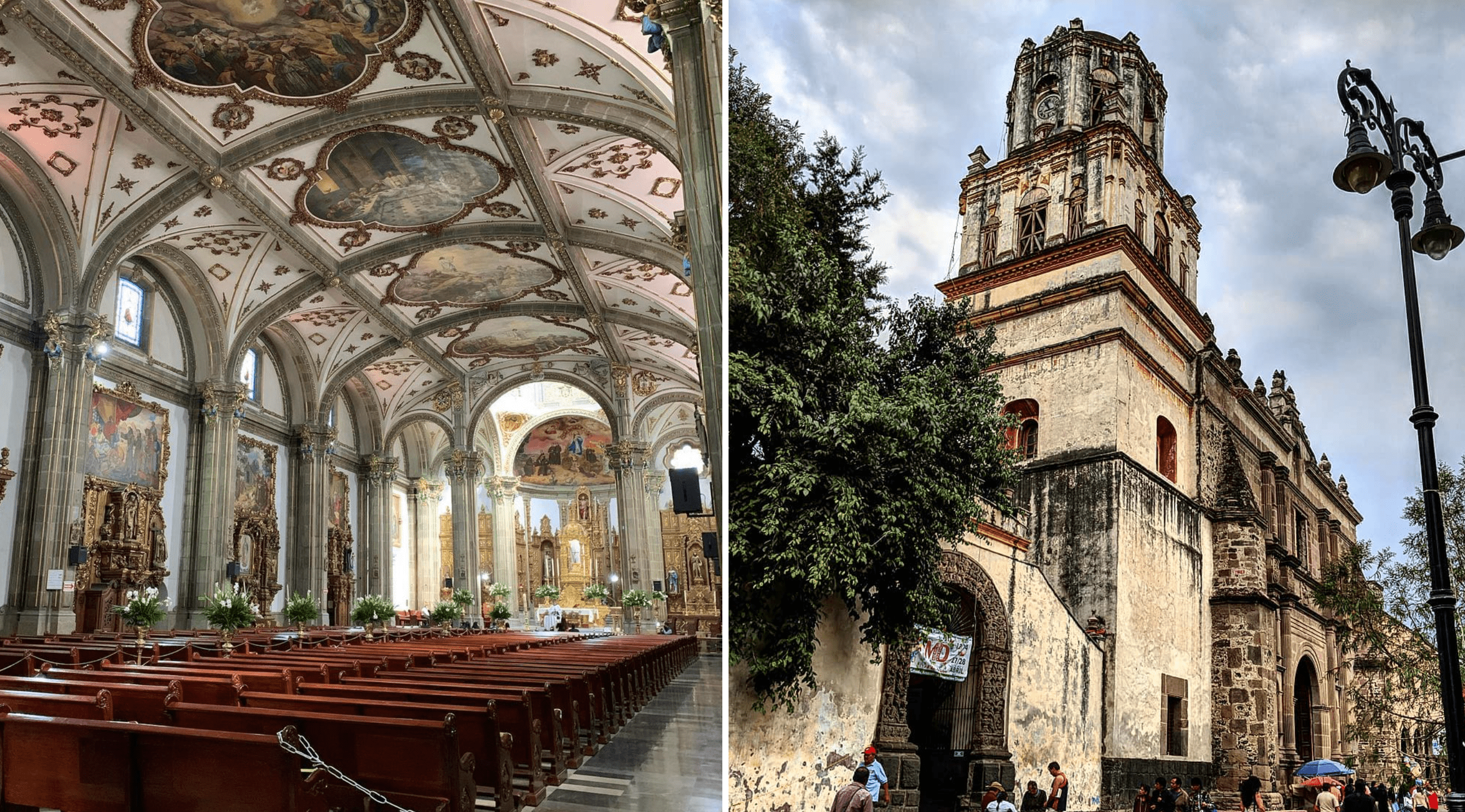En el interior de la zona donde se encuentra uno de los lagos más famosos de la ciudad de México, hay un construcción colonial llena de historia. Con una historia sorprendente y que es conocida por la mayoría de sus habitantes, la Capilla de San Juan Bautista es parte fundamental de los orígenes de Xochimilco.
Si bien los orígenes de Xochimilco se remontan a la época prehispánica, lo que se conserva de la ciudad que se conoce hoy fue construido en el siglo XVII, en los inicios de la colonización en México, para el siglo XVII se construyó una de las iglesias más importantes en el interior de la hoy alcaldía, Capilla de San Juan Bautista.
Este edificio es elegante, con una pequeña torre campanario en la parte superior. El interior de la capilla es igualmente modesto, con un solo altar dedicado a San Juan Bautista, que es el patrono de la localidad.
La capilla es un importante centro de devoción para los habitantes de la zona, especialmente en la celebración del Día de San Juan Bautista, que se celebra el 24 de junio de cada año.
Durante esta festividad, la capilla es el punto de partida de la tradicional procesión de canoas decoradas con flores y banderas que navegan por los canales de Xochimilco.
Se cuenta sobre la Capilla de San Juan Bautista una leyenda muy peculiar, durante la construcción de la iglesia de San Juan Bautista en Xochimilco, se estableció un acuerdo con los habitantes de la cercana localidad de Tepoztlán para que les proporcionaran las piedras necesarias.
Sin embargo, éstos no cumplieron con lo pactado, lo que provocó una disputa. Los tepoztecas decidieron entonces llevar las piedras de manera colaborativa, formando una cadena humana que se extendía desde Tepoztlán hasta San Juan de Xochimilco.
Pero al llegar, los dueños de las piedras exigieron el pago de una cantidad excesiva de agua. Ante la negativa, empezaron a golpear la iglesia, que no contaba con paredes firmes ni estaba correctamente construida, lo que provocó su derrumbe parcial. Al percatarse del peligro, los xochimilcas improvisaron largas cadenas hechas de tule para amarrar la iglesia y evitar su colapso total.
Así nació la leyenda de la fundación y construcción de la iglesia de Xochimilco, orientada hacia el poniente y levantada gracias a los xochimilcas.
INGLES
Inside the area where one of the most famous lakes in Mexico City is located, there is a colonial construction full of history. With a surprising history that is known by most of its inhabitants, the Chapel of San Juan Bautista is a fundamental part of the origins of Xochimilco.
Although the origins of Xochimilco go back to pre-Hispanic times, what remains of the city that is known today was built in the 17th century, at the beginning of colonization in Mexico, for the 17th century one of the churches was built most important inside what is now the mayor’s office, the Chapel of San Juan Bautista.
This building is elegant, with a small bell tower at the top. The interior of the chapel is equally modest, with a single altar dedicated to San Juan Bautista, who is the patron saint of the town.
The chapel is an important center of devotion for the inhabitants of the area, especially in the celebration of the Day of Saint John the Baptist, which is celebrated on June 24 of each year.
During this festivity, the chapel is the starting point for the traditional procession of canoes decorated with flowers and flags that sail through the channels of Xochimilco.
A very peculiar legend is told about the Chapel of San Juan Bautista, during the construction of the church of San Juan Bautista in Xochimilco, an agreement was established with the inhabitants of the nearby town of Tepoztlán to provide them with the necessary stones.
However, they did not comply with the agreement, which caused a dispute. The Tepoztecas then decided to carry the stones collaboratively, forming a human chain that stretched from Tepoztlán to San Juan de Xochimilco.
But upon arrival, the owners of the stones demanded payment for an excessive amount of water. Faced with the refusal, they began to hit the church, which did not have firm walls or was properly built, which caused its partial collapse. Realizing the danger, the Xochimilcas improvised long chains made of tule to tie up the church and prevent its total collapse.
This is how the legend of the foundation and construction of the church of Xochimilco was born, facing west and built thanks to the Xochimilcas.

